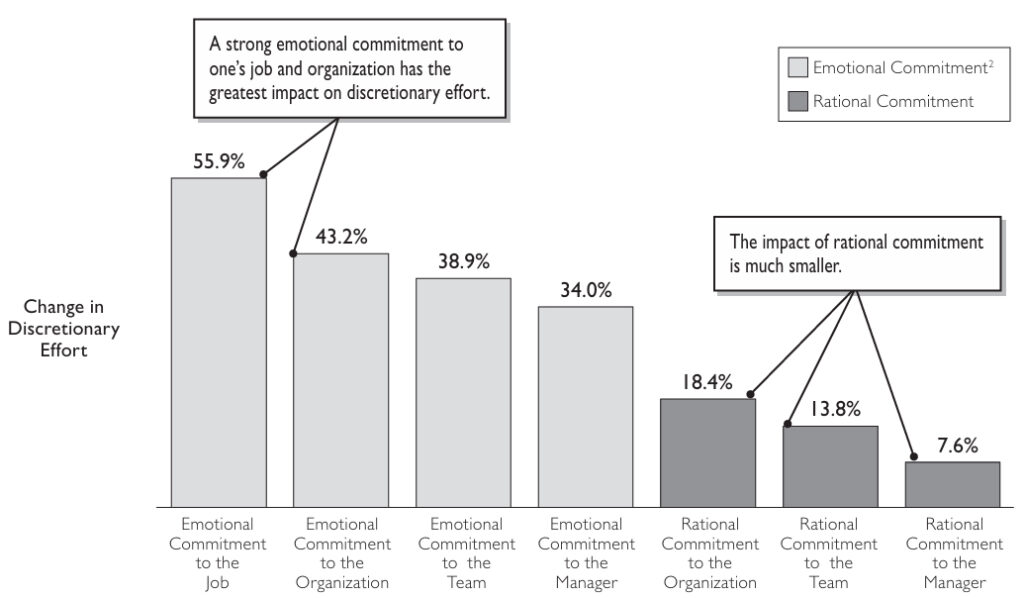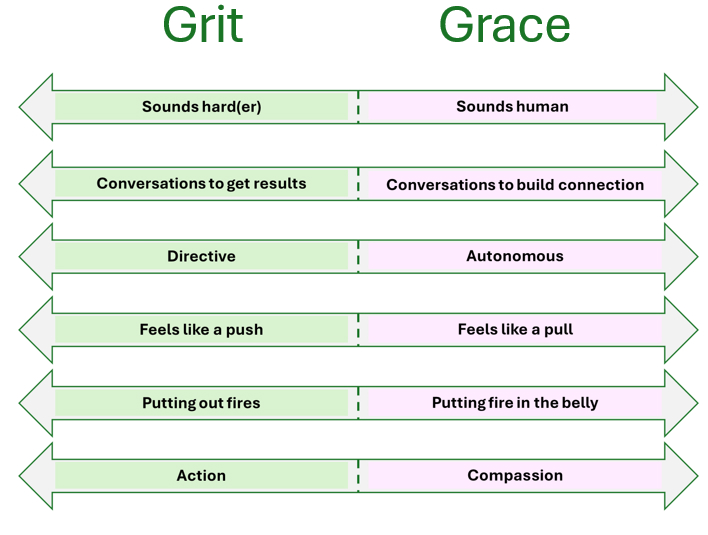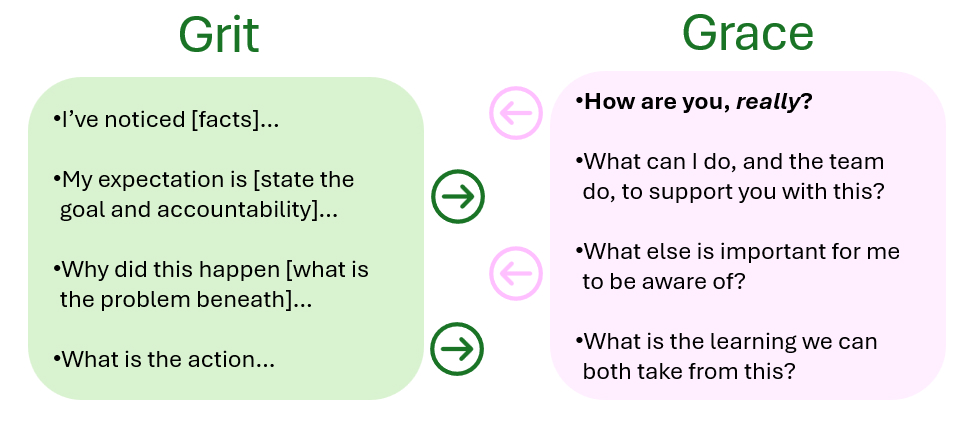Being the Founder CEO of a startup is often likened to flying a plane while simultaneously building it.
You need to hit short-term financial targets to secure investor confidence in the here and now. Which means you need your people to go the extra mile today.
You also need validated learning to achieve sustainable growth and secure future funding. Which means you also need your people to go the extra mile tomorrow.
Given that most successful exits typically happen around the 7–10-year mark, you need to keep a dual focus on present performance AND future-focused strategy validation.
The challenge is…well, us. Behavioural economics show that we tend to give a stronger weighting to payoffs that are closer to today, over rewards that are further into the future.1
So then the question becomes:
How do you bring the hard edge of performance needed to relentlessly pursue results today alongside the human edge of belonging and belief needed to retain (not burn or lose) your greatest talent for tomorrow?
I call this the Grit and Grace method.
As the Founder CEO of a high-growth startup, you need to be able to show up with both if you truly want to reach your growth potential. Often in the same conversation.
It is the use of both, and flexing between, that will enable you to simultaneously drive performance AND create the belonging and belief in you and the vision, that means your people will go the extra mile today and tomorrow and stick it out when things get tough.
What does bringing Grit and Grace actually mean?
We bring more Grit into our conversations when we need to push for performance:
It sounds hard(er), more like a tell. It’s about getting results. It feels like a push. It’s putting out the fires. It’s action to get to done.
We bring more Grace into our conversations when we need to pull for belief:
It sounds human, more autonomous. It’s about belonging and connection. It feels like a pull. It’s putting fire in the bellies. It’s action in compassion.
Why does it matter, really?
Different founder personalities will naturally have a preference towards one or the other. In the many high-pressure moments in startups, we tend to see the raw version of who the leader really is as a human.
Too much of either Grit or Grace creates significant barriers to growth.
Overplayed hard edge of Grit leads to a culture of burn out, mental ill health, lack of risk-taking, hiding problems, finger pointing, not taking ownership.
Overplayed human edge of Grace leads to a culture of nice place to work, too soft, too safe, nothing gets done, targets are missed, no accountability.
Flying with the engines turned off
Founder CEOs who are time starved and under chronic pressure tend to orientate towards Grit. This makes sense. You have to be goal oriented and performance driven to have gotten this far.
When you are building the plane while simultaneously flying it, this tendency towards grit brings two critical blind spots.
1. Your resource is human.
They choose if they want to go the extra mile or not. Pay, bonus and job titles drive rational commitment to what’s in their best interest. But it’s belonging, connection, belief and trust that drives the emotional commitment not just to the job, but to the team and to the vision.
The research shows that it is the emotional connection that drives the choice to go the extra mile and that increased discretionary effort is also a direct predictor of improved performance.2 High pay and incentives cannot be relied on to drive behavioural outcomes.3

If you can’t get your people to go beyond what they HAVE to do, your plane is going to be gliding without the engines turned on.
2. Losing trust is easy.
In a startup you can lose trust a lot faster than you might otherwise do in a larger, more stable corporate. One day your people believe in the vision, they believe in you. The next it has gone. Trust breaks fast when the experience at work becomes all Grit and no Grace. [Read more].
Without trust, everything is harder.4 No-one cares the way they did before. Without the emotional connection, you end up having to pay more, set up more bonuses and incentives and create more artificial job titles or layers in your structure to cling on to the people you need to get the basic job done.
It’s like finding yourself up in the air, on the plane by yourself, with the crew still on the ground.
How do you flex between Grit and Grace?
It can take some practice to begin with. You are strengthening muscles that you use less frequently. It can feel awkward and uncomfortable.
Think of it like running sprints and marathons, with more than a few hurdles and high jumps on route. You will likely have one leg that is stronger than the other. Regardless of whether it is the left leg or the right leg, you will need both legs to get to the end. Having one super-strong leg and a weak one will mean the race is longer, harder and you risk being overtaken and beaten before you reach the finish line.
Similarly, you will naturally be stronger with Grit or with Grace. It’s really just about building up more muscle in the other ‘leg’ so you can win the sprint today, and the marathon tomorrow.
Here are my top 4 strategies to build your weaker growth muscle.
1. Start with self-awareness
It’s not about showing up inauthentically and being a different person to who you really are. It is about noticing when you’ve been leaning for a long time on your preferred leg. This is often the time to consciously think about leaning on the other.
For those virtual meetings, it can help to pin a visual aid on Slack or Teams – or to a physical whiteboard in front of you – as a prompt in the moment.
You can use this version or create your own.

2. Make it a team effort
Take a look at the team you have around you – your top team, the Board and your trusted friends and advisers. Where do they lean on Grit and Grace?
Find those who lean the other way to you and agree how can you spot each other. How can you bring more balance between you. These can become powerful combinations when consciously considered. The research consistently shows that the startups with more cognitive diversity around the top table deliver the best exit outcomes.5
3. Bring Grit and Grace together like a zip
You are practicing flexing between Grit and Grace. Leaning in and out. Take care that in doing so you are not watering down either. Keep the messages distinct, not a vanilla blend.
Think of it more like a zip. You are bringing the left side and right side together, but you can still see each side.
4. Practice Grit and Grace – in all places
I recommend you practice with Grit and Grace, in all places. Great places to begin practicing include one-on-ones with your team; Exec team meetings; Company All-Hands; weekly KPI review meetings.
Start small, treat it as a series of experiments, see what you learn.
I’ll give you an example. Imagine you are having a conversation with one of your team about their performance, which has noticeably dipped in recent weeks. Here’s how you can bring both Grit and Grace to get the best outcome from your conversation. Let the conversation flow and bring your awareness to how much time you are spending in either Grit or Grace, and consciously bring in the other when needed.

When you learn how to flex in and out of Grit and Grace and strengthen your growth muscles, you’ll not only have the plane, but also the crew and the fuel to deliver the performance results you need today, and the capability and confidence to succeed tomorrow.
References
1 Present bias – Behavioral Economics
2 CLC Driving performance and retention through engagement
3 Review of Economic Studies, Large Stakes Big Mistakes

